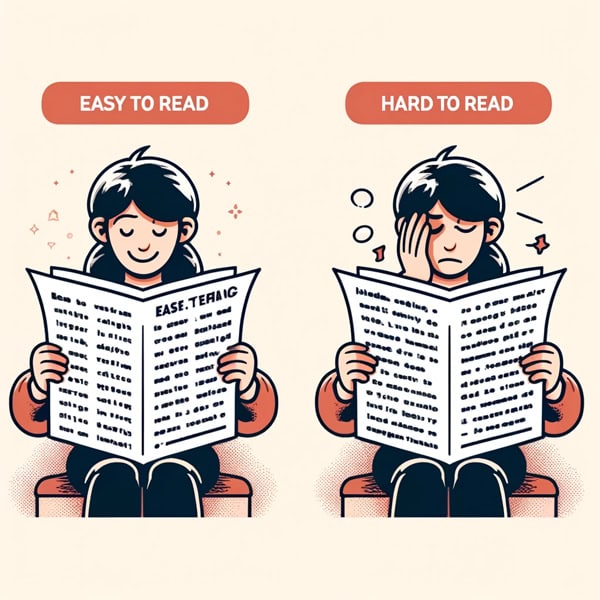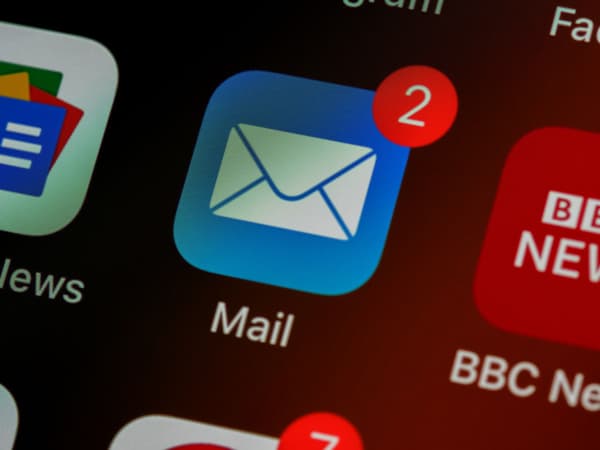Imagine losing potential customers simply because your text is hard to read. It sounds dramatic, but it’s true! In our latest blog post, we reveal how something as simple as text justification can make or break your audience’s experience. Dive into the world of accessibility and learn why left-justified text is a game-changer, as per WCAG Success Criterion 1.4.8.
Today, while preparing an email campaign for a client, she asked, “I know you like the left justified, but I really dislike it, can we change to center?” The issue with this is that she is choosing her own personal preference over being more inclusive for her audience. Now, I get it—centered text can look elegant, even poetic, but when it comes to readability and accessibility, left-justified text is the unsung hero.
Let’s dive into why left is right, especially when we consider the Web Content Accessibility Guidelines (WCAG) Success Criterion 1.4.8.

The Lowdown on WCAG Success Criterion 1.4.8
The WCAG guidelines are designed to make web content more accessible to people with disabilities. Success Criterion 1.4.8 focuses on visual presentation, emphasizing that text should be left-justified to enhance readability for everyone, including those with cognitive disabilities, dyslexia, and other reading impairments. The goal is to create content that is not only aesthetically pleasing but also accessible to the widest possible audience.
Why Left Justified?
- Predictable Reading Flow: Left-justified text creates a consistent starting point for each line, making it easier for readers to follow along without losing their place. This is particularly helpful for people with cognitive and visual impairments.
- Uniform Word Spacing: When text is left-justified, the spacing between words remains consistent, reducing the likelihood of “rivers of white” – those distracting spaces that can occur in fully justified or centered text.
- Improved Comprehension: Studies have shown that left-justified text improves reading speed and comprehension. When the brain doesn’t have to work as hard to find the beginning of each line, it can focus more on understanding the content.
The Centered Text Conundrum
Centered text, while visually appealing in some contexts (think wedding invitations or poetry), can be a readability nightmare in emails and web content. Here’s why:
- Inconsistent Line Start: Each line begins at a different place, making it difficult for readers to track where the next line starts, leading to frustration and decreased comprehension.
- Varied Word Spacing: Centered text often results in uneven spacing between words, creating distracting patterns that can confuse readers.
- Accessibility Barriers: For individuals using screen readers or other assistive technologies, centered text can be more challenging to navigate, as these tools rely on predictable text structures to function effectively.
Finding the Balance
While it’s important to consider aesthetic preferences, it’s crucial to prioritize accessibility. A good compromise could be using left-justified text for the main body of content while reserving centered text for headings or short, impactful statements.
Final Thoughts
So, next time you’re tempted to center your text for that sleek, polished look, remember: accessibility trumps aesthetics. By choosing left-justified text, you’re not only adhering to WCAG guidelines but also ensuring your content is accessible to a broader audience. And who knows? Your readers might just thank you for making their reading experience a little smoother.
In conclusion, left-justified text isn’t just a personal preference—it’s a best practice that helps make content accessible to everyone. So, let’s raise a toast to inclusivity and keep our text left-aligned, one email at a time.
Need Help with Email Marketing or Web Design?
At Holler Digital, we specialize in creating accessible and effective digital experiences. Whether you need help with email marketing, web design, or ensuring your website meets accessibility standards, our team is here to help.
Don’t let poor readability and accessibility hold back your business. Reach out to us today and let’s create a digital presence that everyone can enjoy!

